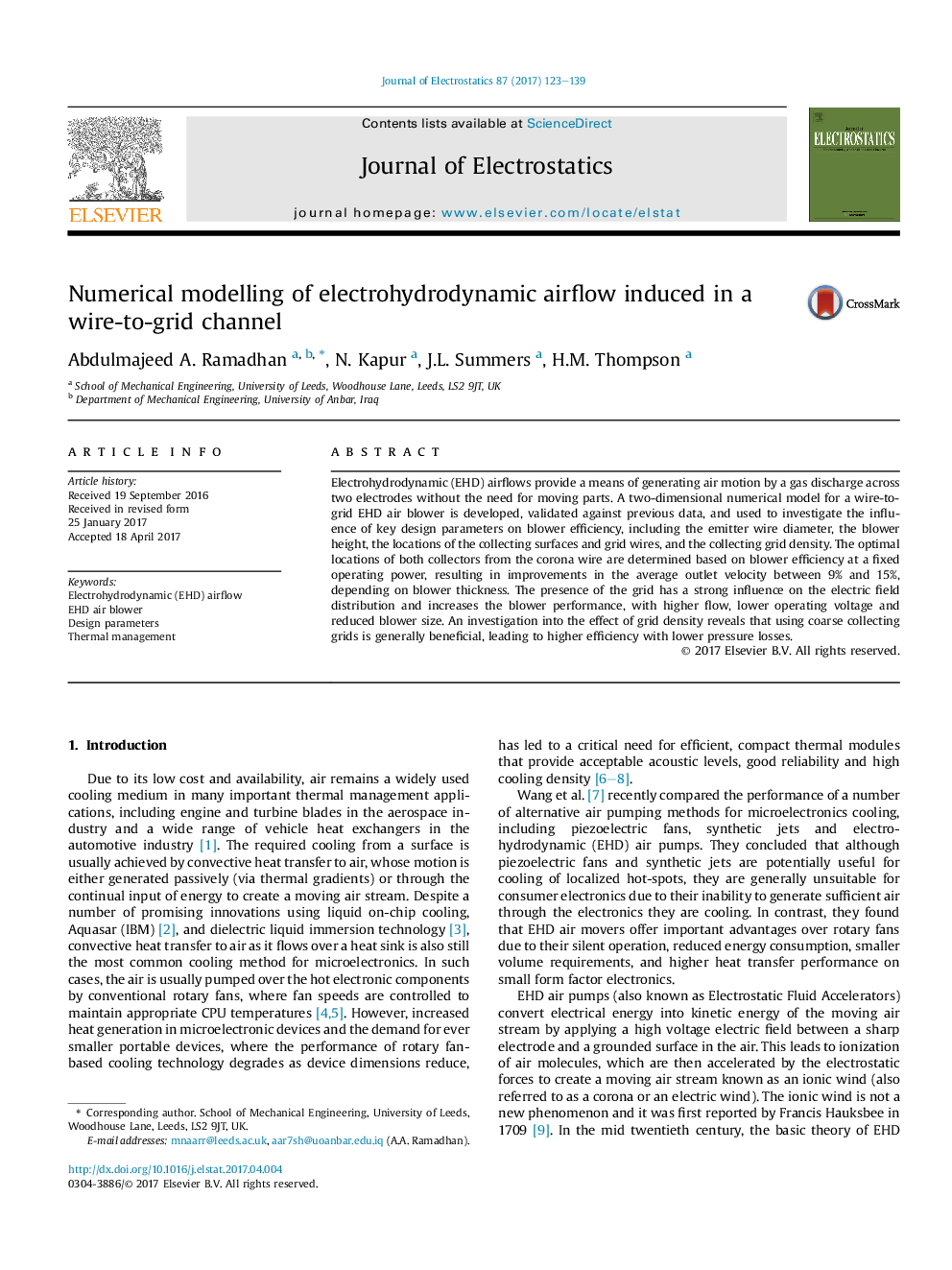| Article ID | Journal | Published Year | Pages | File Type |
|---|---|---|---|---|
| 5005739 | Journal of Electrostatics | 2017 | 17 Pages |
Abstract
Electrohydrodynamic (EHD) airflows provide a means of generating air motion by a gas discharge across two electrodes without the need for moving parts. A two-dimensional numerical model for a wire-to-grid EHD air blower is developed, validated against previous data, and used to investigate the influence of key design parameters on blower efficiency, including the emitter wire diameter, the blower height, the locations of the collecting surfaces and grid wires, and the collecting grid density. The optimal locations of both collectors from the corona wire are determined based on blower efficiency at a fixed operating power, resulting in improvements in the average outlet velocity between 9% and 15%, depending on blower thickness. The presence of the grid has a strong influence on the electric field distribution and increases the blower performance, with higher flow, lower operating voltage and reduced blower size. An investigation into the effect of grid density reveals that using coarse collecting grids is generally beneficial, leading to higher efficiency with lower pressure losses.
Keywords
Related Topics
Physical Sciences and Engineering
Engineering
Electrical and Electronic Engineering
Authors
Abdulmajeed A. Ramadhan, N. Kapur, J.L. Summers, H.M. Thompson,
